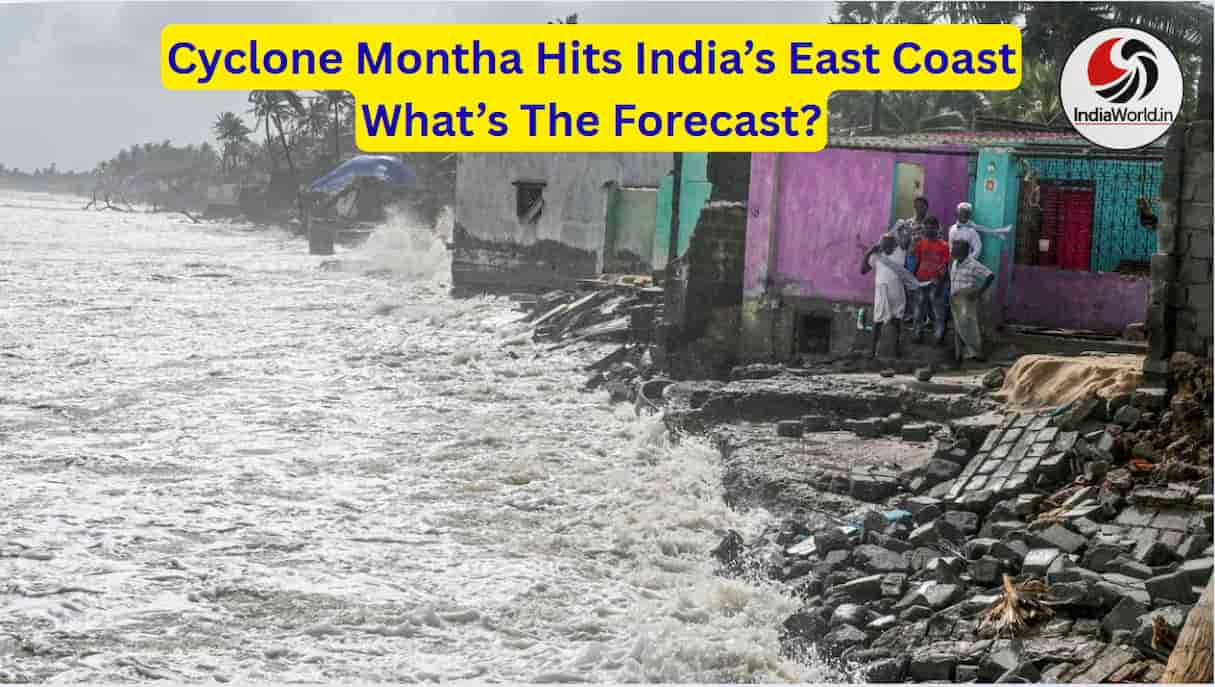Watch This – Cyclone Montha Update: India’s East Coast Braces For The Storm
The ferocious storm named Cyclone Montha is now threatening India’s eastern coast in full force — with heavy rain in Andhra Pradesh, evacuation in Odisha, and weather warnings in Telangana and other states. As dozens of thousands are relocated and transport is disrupted, this update is critical for coastal-region residents.
What Is Cyclone Montha and Why It Matters
Meteorologists say Cyclone Montha formed over the south-eastern Bay of Bengal and rapidly strengthened into a Severe Cyclonic Storm (SCS). It was named “Montha” as part of the naming list used by the region. Why does this matter? Because storms of this nature bring heavy rains, strong gusty winds, high tide-surges and floods — especially in low-lying coastal zones.
Latest Path & Landfall Details for Cyclone Montha
The system moved north-northwestwards and was expected to cross the coast of Andhra Pradesh between Machilipatnam and Kalingapatnam (near Kakinada) on the evening or night of 28 October. Wind speeds were forecast at 90–100 km/h, with gusts up to 110 km/h. After landfall, the storm weakened into a Cyclonic Storm but rainfall and winds continue over interior areas.
Impact & Preparations in Andhra Pradesh
- Authorities in Andhra have issued red alerts across many coastal districts.
- Some 3,778 villages in Andhra were placed on rain-alert.
- In the Guntur district, 92 relief camps were activated and nearly 6,000 people evacuated.
- Heavy-to-very-heavy rainfall is expected in districts including Kakinada, West Godavari, Krishna and Nellore.
- The state government imposed bans on heavy vehicles on major highways from evening hours ahead of landfall.
- Officials have asked people to stay indoors, avoid open areas, and fishermen to avoid going to sea.

What’s Happening in Odisha & Telangana
Odisha
- Districts in South Odisha such as Ganjam, Gajapati, Rayagada, Koraput are under intense weather watch.
- Evacuations and readiness measures are underway as the cyclone approaches from the Bay of Bengal.
Telangana
- While Telangana is some distance from the coast, weather warnings are in place for heavy rainfall and winds.
- Transport disruption: The South Central Railway cancelled 139 trains and diverted 29 others because of flooding of tracks and stations in Mahabubabad district.
- Local administrations are monitoring rivers and drainage systems to avoid flash-floods.
Key Safety Measures for Residents
- Stay updated on alerts from the India Meteorological Department (IMD). (IMD Mausam)
- If you live in a low-lying coastal area (for example in Andhra: Kakinada, Konaseema) prepare for evacuation.
- Secure outdoor items, stay away from windows and open spaces.
- Avoid driving during heavy gusts or standing water on roads.
- Fishermen and sea-users must stay off the water until the storm passes.
- After landfall, be cautious of flash-floods, landslides (especially in hilly or forest-fringe zones) and fallen power-lines.
Forecast & What Comes Next
- The landfall process is ongoing; despite the peak, the system will continue to affect interior regions with rain and wind for several more hours.
- Over the next 1-2 days, many coastal and adjoining districts will still face heavy-to-very heavy rain, storm-surge risk and rough seas.
- In the longer term (31 Oct to 4 Nov) rain-showers and clouds may linger, increasing humidity and moisture levels inland.
- Farmers should drain standing water in fields and avoid working during strong wind or rainfall conditions.
- Travel plans should be re-evaluated; transport networks (flights, trains, roads) may face further disruption.
Why This Storm Is Significant & Final Thoughts
Cyclone Montha is among the stronger storms this post-monsoon season for India’s east coast. Given warming sea-temperatures and moisture-rich air over the Bay of Bengal, the potential for rapid intensification and heavy rainfall has increased. The scale of evacuations (over tens of thousands) and high-alert across multiple states reflects the seriousness of the event.
For residents of Andhra Pradesh, Odisha, and neighbouring states, vigilance, timely evacuation and following official instructions can make the difference between safe outcome and disaster. Stay tuned for updates and take care.








